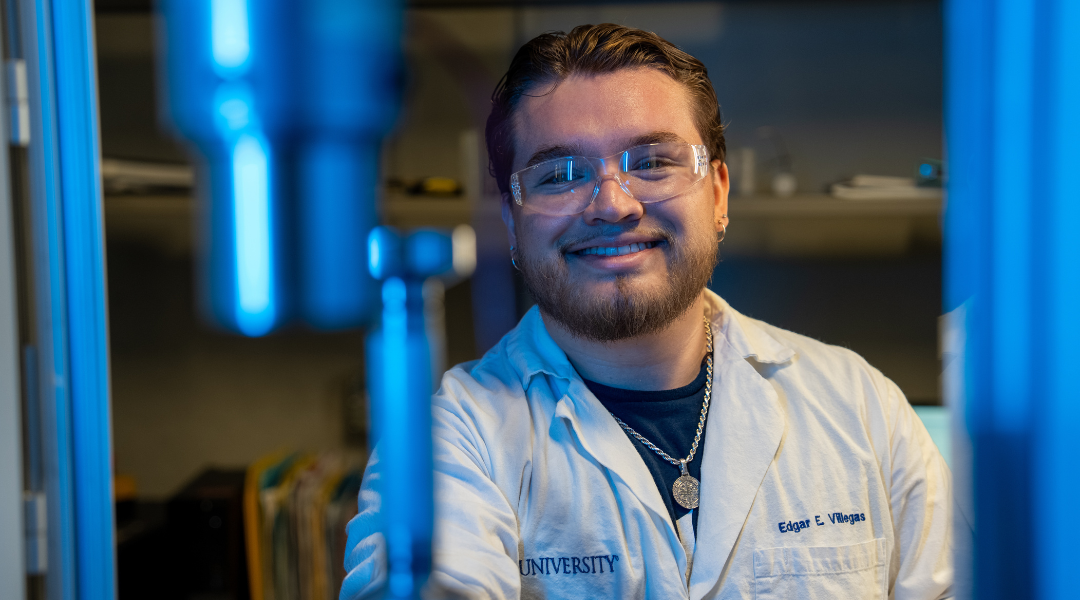What do tsunami-generating earthquakes and world-changing asteroid impacts have in common? According to Rice University graduate student Edgar Villegas, the answer lies in the smallest details. Tiny cracks, pores, and voids in rocks may hold the key to understanding colossal events, from collisions that shape the history of entire worlds to earthquakes that ripple beneath the ocean.
Villegas, now pursuing a doctorate in Earth, Environmental and Planetary Sciences, studies how rocks respond to stress both in space and deep beneath Earth’s surface. His research spans scales from microscopic pore structures to the massive forces that can alter asteroids or trigger tsunamis.
“Impacts are at the crossroads of astrophysics and geophysics,” Villegas said. “By looking at how asteroids deform under stress, we can better understand their evolution and the role of collisions in shaping planets.”
In Rice’s experimental facilities, Villegas brings these extreme events to life. He fires projectiles into rock samples using gas-powered launchers, then examines the resulting fractures and craters in minute detail. He also conducts long-duration stress tests on ocean sediments, simulating the pressures, temperatures, and fluid conditions found several kilometers beneath the Earth’s surface. These experiments reveal how rocks bend, break, and flow — providing insights for both planetary science and earthquake mechanics.
For Villegas, the path to planetary science began with a love of the stars and a desire to bring astrophysics down to Earth. Graduate life at Rice allows him to work across disciplines. “I collaborate with engineers, physicists, and geologists,” he said. “That kind of environment makes it possible to tackle questions about planetary formation, earthquake physics, and the evolution of rocks from multiple perspectives.”
As a Hispanic scientist, Villegas also sees his journey as part of a larger narrative. During Hispanic Heritage Month, he reflects on the importance of representation in scientific fields that reach from the depths of the Earth to the stars. “I’m proud to contribute to planetary science while celebrating my heritage,” he said. “Hispanic Heritage Month reminds us that our roots and our resilience are part of the future of discovery, juntos brillamos, together we shine.”

